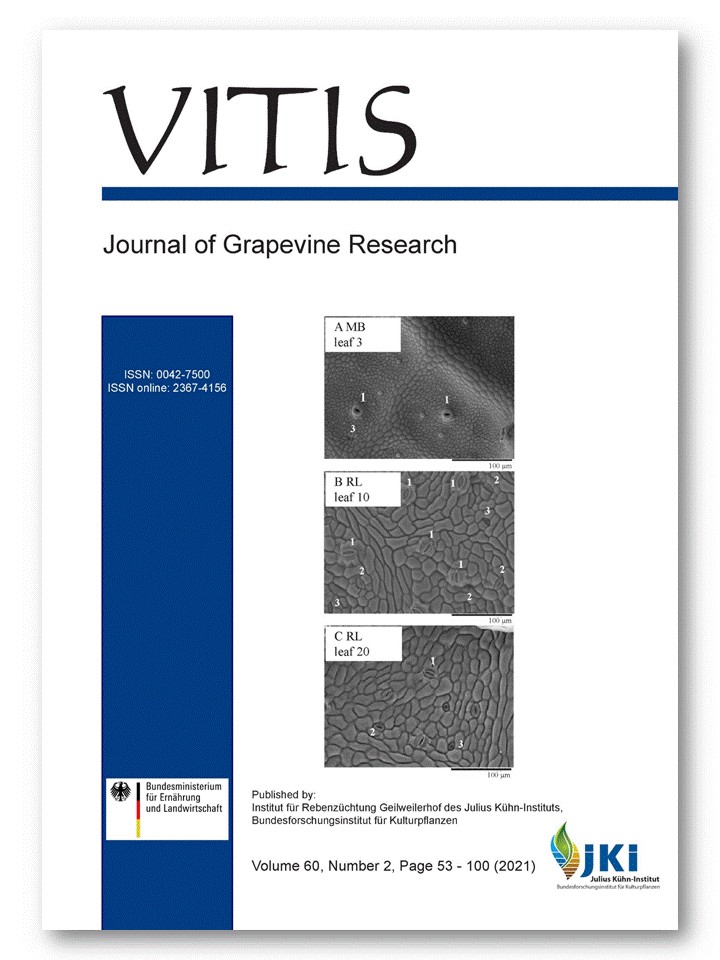Effects of genotype and environmental conditions on grapevine (Vitis vinifera L.) shoot morphology
DOI:
https://doi.org/10.5073/vitis.2021.60.85-91Abstract
Grapevine shoot morphology is widely studied for both ampelography and growing adaptation to environmental stresses. However, few is known concerning the relative contribution and interactions of the genotype and of the growing conditions to the vegetative growth. In this work, seven grapevine cultivars were studied in three geographically distant ampelographic collections to maximize the genotype and environment differences among samples. Phytomers were studied concerning the leaf area and the stem and petiole diameters and lengths. These measurements allowed the calculation of derivative parameters to describe the proportions among elements. Despite most of the studied parameters significantly discriminated both factors (cultivar and growing conditions), it was possible to identify, for each one of them, the most promising parameters based on their relative variance explanation. In fact, a negative correlation was observed between the roles of genotype and environment among the studied parameters. The low interaction effect suggested a stability in the plant behaviors, confirming the possibility to use vegetative descriptions for both cultivar discrimination and growing conditions. Future studies will be performed to develop specific indexes based on the phenotypical variability of shoot morphology described here.
Downloads
Additional Files
Published
Issue
Section
License
Copyright (c) 2021 The Author(s)

This work is licensed under a Creative Commons Attribution 4.0 International License.
The content of VITIS is published under a Creative Commons Attribution 4.0 license. Any user is free to share and adapt (remix, transform, build upon) the content as long as the original publication is attributed (authors, title, year, journal, issue, pages) and any changes to the original are clearly labeled. We do not prohibit or charge a fee for reuse of published content. The use of general descriptive names, trade names, trademarks, and so forth in any publication herein, even if not specifically indicated, does not imply that these names are not protected by the relevant laws and regulations. The submitting author agrees to these terms on behalf of all co-authors when submitting a manuscript. Please be aware that this license cannot be revoked. All authors retain the copyright on their work and are able to enter into separate, additional contractual arrangements.



